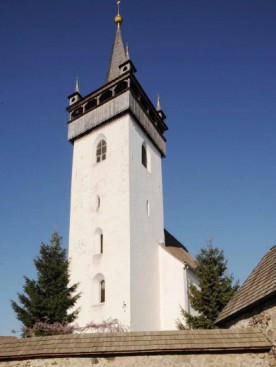The Calvinist Church –KhustKhust, located on the right banks of the river Tisza, was the seat of the Máramaros royal estate and was populated by Saxon tradesmen as well as Hungarian peasants and salt miners. It was one of the royal free-towns belonging to the Crown. Considering the data recorded in the register on the Papal Tenth kept by the local church dedicated to Saint Elisabeth of Hungary, in the 14th century, the market town (oppidum) Khust was the third most important township in Kárpátalja (Subcarpathia). The nave connected to the four-storey tower and the sanctuary, enclosed by five sides of an octagon and covered by a single-cell vault, were probably built during the same period. These two parts also have the same height. The sacristy is a later addition, although the frames of its openings suggest that it was built also in medieval times. The style of shape details is basically Gothic, but Romanesque solutions can also be observed. Certain details of the northern and southern gates characterise also earlier periods of Gothic architecture. Based on these observations, the church must have been built roughly between the 1330s and 1370s. The shapes of the church resemble certain details of the churches in Tiachiv and Vyshkove, but this is no surprise since we are speaking of the period following 1329, the granting of town privileges and the flourishing of the royal free-towns belonging to the Crown. However, a certain part of the church might have been built later. The projecting columns of the sanctuary end abruptly as they reach the height of the windows’ middle section and have no organic links to the canopies supporting the present vault ribs. The first painting of the inside was done in a single period, at the beginning of the 15th century. The northern wall of the nave and the northern pillar of the chancel arch were decorated then with murals. In 2012, a unique depiction of ‘The Man of Sorrows’ representing the whole figure of Christ displaying the wounds of his Passion has been uncovered on the western wall of the nave. |















